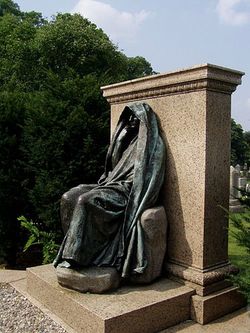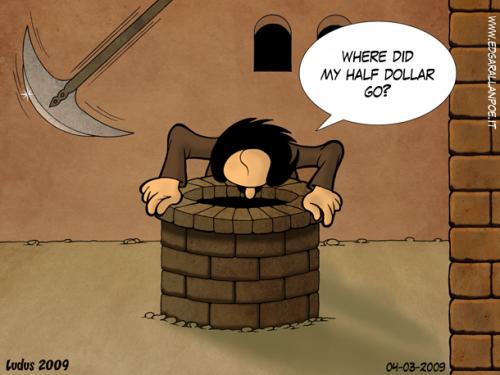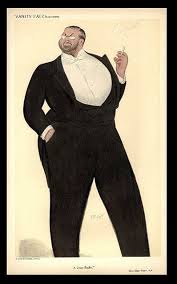
Some years ago I experienced a strange and rather powerful coincidence. I had been talking over breakfast in DC with my freind Hunter Rawlings. He urged me to read Henry Adams' The Education of Henry Adams and noted how strange it was that Adams never mentioned his wife , Clover, who had committed suicide in 1885.
Then a few hours after our breakfast chat I wandered into an alcove in the Smithsonian's Museum of American Art and was deeply moved by a seated bronze figure. I stared at it for some while before reading what it was -- a cast of the sculpture Adams had asked Augustus Saint-Gaudens to create as a memorial for his late wife.. He wanted, he said, something beyond sadness or joy, exultation or despair -- something that might evoke the Buddhist idea of nirvana.
I was powerfullymoved by the sculpture, and, honestly, some what awe-stricken by the coincidence, the talk about Adams with my friend and my accidentally stepping into that alcove. Coincidences increasingly seem to me to be invitations to thought.
Yesterday, visiting friends in DC, I talked them into going to the Rock Creek cemetery (n where near Rock Creek) to see the original of the memorial. Again, amazement.
The memorial is surrounded by thick evergreens that allow only two ways -- one on the far left, the other on the right.-- into the space surrounding the memorial itself. (That space is perhaps 25 feet by 35 feet. ) There is no way to see the sculpture until you enter that space. Even then you may not immediately notice it, since the eye is drawn to the long yellow granite bench, exquisitely polished, gleaming, almost blinding in the sun,
Then, obliquely, in peripheral vision at first, is the dark figure, looming there. In the bright sun I could not make much out at first, and even after shielding my eyes and letting them adjust, it was beyond describing neither male not female, not of this world nor the beyond. I knew the identification "nirvana," and a little of what that implied, but there is no label, neither that name nor "Adams," no dates, no words. Just the presence of this dark. more than life sized figure seated on rough, dark gray granite, boulder-like, chiseled out just enough to make a seat.
One more thing -- classicism! Downtown in the Smithsonian museum, I had no idea that behind this figure there was a rectangular block of the same, bright, yellowish granite, used on the bench, brightly polished, perfectly rectilinear, and capped with an entablature of purest classical form.
Dark figure, flowing black robe, seated on rough hewn rock, totally un-classical, anti-classical even, "Buddhist" I suppose, but not like any Buddhist art I have ever seen. Flowing, the flux perhaps, but set up against the bright geometry of the Greeks.
Then, if you step outside, walk around the greenery, there is one gap (other than the two entrances), a narrow space so that one can see the back of the yellow granite backdrop, and on it, two interlocking crowns, victory wreaths? lovers' knots? but powerfully evocative of classical art. There's a model somewhere out there in a hellenistic site in Asia Minor, I bet.
I thought, Maybe that's what it's for, this strangely persistent classicism, forms that will not go away -- so old-fashioned, so out-of-date, so irrelevant, so silly, so snobby, so pretentious so much of the time, but once in awhile classiciism reaches out to raw, unshaped, inexpressible feeling, and says "I understand; I know what is beyond words, beyond light and darkness, seeing and not seeing, beyond categories of thought and experience, beyond male and female, beyond life and death, beyond feelings even. I know all that, the shaped marble seems to say, but emerging from all that there is yet form, and with form, perhaps only with form, can you live with such intensity."
Have you see the memorial? If so, tell me what you think. If not, leave the downtown memorials to the high school kids and ee for yourself.


 RSS Feed
RSS Feed
